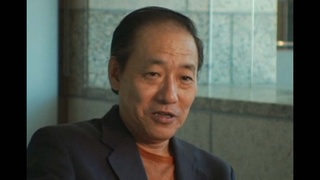Interviews
Longing for a life abroad and getting a chef’s license (Japanese)
(Japanese) When I was in college, I was working part-time mostly in the food business, like at a bento store. In order to get a chef's license I needed to get approval from the head of the store there and he gave me his signature. With that, I passed the test and got my license. So I had it with me. I got my license simply because I thought I could get on a cargo ship or a cargo-passenger ship for free and cross the ocean, with my license. But that didn’t happen and when I got here, before I started working as a gardener, when I went to Japan Town, I found that there were only two or three Japanese restaurants. And when I told them I had a chef’s license, they freaked out, and they didn’t want to hire me for that reason. They were like, we don’t want someone with skills that high.
Date: August 4, 2015
Location: California, US
Interviewer: Mitsue Watanabe
Contributed by: Watase Media Arts Center, Japanese American National Museum
Explore More Videos

On returning to post-war Peru (Japanese)
(b. 1948) Executive Director of Amano Museum

Working at the family flower shop, meeting Greta Garbo
(1916-2016) Florist





Facing discrimination in America (Japanese)
(b. 1936) Shin-issei welding business owner



My daughter couldn’t fit in Japan, so I decided to go back to America (Japanese)
(b. 1936) Shin-issei welding business owner



General reasons why people left Japan for Peru
Okinawan American whose parents are from Peru.

Her mother came to the U.S. with a group of picture brides
(b. 1923) Japanese American poet, activist

Her father bought her mother American clothes after she arrived from Japan
(b. 1923) Japanese American poet, activist
